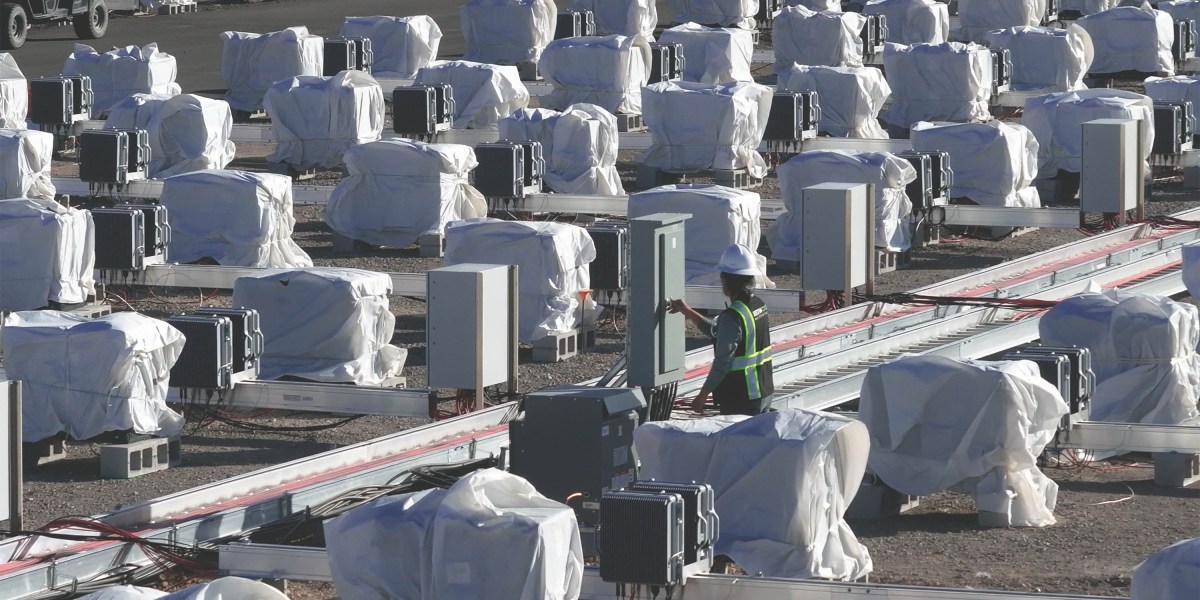Summary
The event marked the launch of the company’s new business line, Redwood Energy, which will repurpose (rather than recycle) batteries with years of remaining life to create renewable-powered microgrids. Such small-scale energy systems can operate on or off the larger electricity grid, providing electricity for businesses or communities.
Source: MIT Technology Review

AI News Q&A (Free Content)
Q1: What are the primary functions and advantages of microgrids in renewable energy systems?
A1: Microgrids are localized grids that can disconnect from the traditional grid to operate autonomously, enhancing energy security and providing power in emergencies. They integrate various sources of distributed generation, especially renewable sources, and offer benefits like improved energy efficiency through waste heat utilization for heating and cooling. Microgrids enable rural electrification in remote areas where connecting to a centralized grid is unfeasible.
Q2: How do battery energy storage systems enhance the functionality of microgrids with renewable energy?
A2: Battery energy storage systems (BESS) are crucial for making renewable energy more controllable and usable on demand within microgrids. They store generated renewable energy and supply it when needed, helping to meet operating criteria and reducing the difficulty of power scheduling. Proper control strategies and prediction techniques for BESS can maximize profit and minimize energy costs within microgrids.
Q3: What challenges are associated with operating microgrids that utilize renewable energy and battery storage?
A3: Operating microgrids with renewable energy and battery storage presents challenges such as managing the variability and intermittency of renewable resources. Additionally, real-time energy management involves complexities like battery energy level evolution and uncertainties in renewable generation forecasts. Innovative control approaches, such as tube-based model predictive control (MPC), are being developed to address these challenges.
Q4: What recent innovations in control strategies are being developed for optimizing microgrid operations?
A4: Recent innovations include control algorithms designed to maximize profit and minimize energy costs in microgrids by using predicted data on renewable power, temperature, electricity price, and load demand. These strategies aim to make renewable energy more dispatchable and efficient, enhancing the overall functionality of microgrids.
Q5: How is the renewable energy microgrid optimizer (REMO) model improving offshore renewable energy systems?
A5: The REMO model is designed to optimize the sizing of renewable generation and storage resources for offshore microgrids. It incorporates a deep neural network-based battery degradation module to account for battery degradation costs accurately, ensuring high reliability and sustainability while minimizing energy costs. This makes it a viable solution for offshore platforms and coastal communities.
Q6: What are the environmental and economic impacts of implementing microgrids powered by renewable energy?
A6: Microgrids powered by renewable energy significantly reduce carbon emissions and reliance on fossil fuels, contributing to environmental sustainability. Economically, they provide a cost-effective solution for energy supply in remote areas and improve energy resilience. The integration of advanced storage solutions further enhances their economic viability by reducing energy costs over time.
Q7: What role do microgrids play in the transition towards sustainable and resilient power systems?
A7: Microgrids play a crucial role in the transition towards sustainable and resilient power systems by integrating renewable energy sources and advanced storage solutions. They offer a flexible and reliable energy supply, particularly for isolated or remote communities, and contribute to reducing the global carbon footprint. Microgrids also support energy independence and security, making them a critical component of future energy infrastructures.
References:
- Microgrid
- Control Strategies for Microgrids with Renewable Energy Generation and Battery Energy Storage Systems
- Optimal Microgrid Sizing of Offshore Renewable Energy Sources for Offshore Platforms and Coastal Communities
- Real-time Operation Optimization of Microgrids with Battery Energy Storage System: A Tube-based Model Predictive Control Approach




